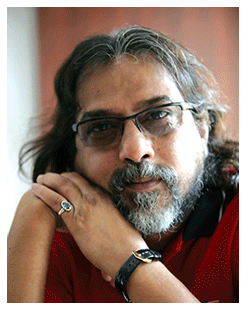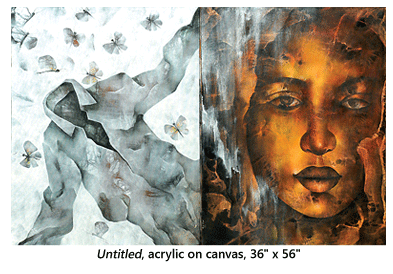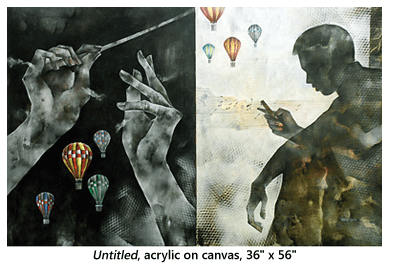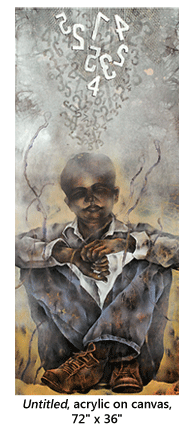- Prelude
- Editorial
- Interpretation of Antiquities and Art Treasure Act
- Jawahar Sircar
- Dr. Gautam Sengupta: Director General ASI
- Preserve our Heritage
- In Camera: An Unobtrusive Gaze of the Filmmaker's Journey
- A look into the Patna Museum
- Museums of Madhya Pradesh: An Overview
- A Collection of Museums and a Museum for Collectors (Museum & Galleries at Chitrakala Parishath, Bangalore)
- Discovery: Andhra Paintings of the Ramayana
- An Art work can be Reproduced not the Antique
- Hazarduari Palace Museum: One of the 7 wonders of India
- The Silken Embroidery of Antique Collection
- Khuddur Jatra: a transformation from literature to art and back to literature
- India Art Festival A Preview
- Warping the Modernist Space: Stylistics of Postmodern Architecture
- Vintage Radio
- Sekhar Roy
- Who's afraid of AATA and what is it afraid about?
- China's rise and India's place
- What Happened and What's Forthcoming
- Art Events Kolkata: April – May 2011
- The more the merrier
- Mumbai Art Sighting
- North East Opsis
- Art Bengaluru
- Musings from Chennai
- Previews
- In the News
ART news & views
Sekhar Roy
Volume: 3 Issue No: 17 Month: 6 Year: 2011
Profile
 Sekhar Roy studied with Applied Arts at the Government Art College in Kolkata. He wanted to go for Fine Arts, but then, a few seniors at the College advised him that Applied Arts was more practicable, because it was the only art degree with which one could land a job. Yet, by his fourth year at the college he had realized that his chosen course was no more tugging at his heart.
Sekhar Roy studied with Applied Arts at the Government Art College in Kolkata. He wanted to go for Fine Arts, but then, a few seniors at the College advised him that Applied Arts was more practicable, because it was the only art degree with which one could land a job. Yet, by his fourth year at the college he had realized that his chosen course was no more tugging at his heart.
“I was feeling attracted to what came naturally to me. Dabbing in forms, trying out different modes of expression. Applied Art was not my cup of tea, I knew, but I finished the course nevertheless,” says Sekhar. He did that to get a job. At that point, he needed one badly. His family depended on it. 33 years later, the boy who did not even get an institutional training
in fine arts, is a sought after painter in the Indian circuit. Irony of fate?
Or is it all about the gritty determination of a young man to pursue his passion? They love him for what he does. His technique is a craft that many want to emulate. There's a liquid fluidity in his canvas, that he can retain irrespective of the medium he is working in. Be it acrylic, oil or water. Although, for close to half a decade he has worked mainly in acrylic. But one thing is for sure and critics and aficionados agree on this that this man is mysterious, away from this world, despite living in it to the fullest. “He couldn't help but feel the essential loneliness of man and (sic) “tried to express this pervading sense of alienation in my works,” he says.  “He succeeded,” writes Sheba Thayil in The New Sunday Express on 11 February, 2001. But why this sense of alienation in a painter, who by his own admission pursues art for art's sake only, never believing it to be the responsibility of a painter to give a predetermined message through his canvas? Art critic Manasij Majumdar gives an insight in a foreword to an exhibition brochure of Sekhar Roy that he wrote in 1991. “Like many of his generation, he grew up in the seventies amidst the political violence of the urban terrorists pitted against the deepening socio-economic crisis of the time. The crisis has further deepened since then. But its impact on the younger generation does trigger no violent ideological response. This is so because of a more serious crisis of faith in any political assurance of a millennium at the end of the tunnel”.
“He succeeded,” writes Sheba Thayil in The New Sunday Express on 11 February, 2001. But why this sense of alienation in a painter, who by his own admission pursues art for art's sake only, never believing it to be the responsibility of a painter to give a predetermined message through his canvas? Art critic Manasij Majumdar gives an insight in a foreword to an exhibition brochure of Sekhar Roy that he wrote in 1991. “Like many of his generation, he grew up in the seventies amidst the political violence of the urban terrorists pitted against the deepening socio-economic crisis of the time. The crisis has further deepened since then. But its impact on the younger generation does trigger no violent ideological response. This is so because of a more serious crisis of faith in any political assurance of a millennium at the end of the tunnel”.
Sekhar's acrylics generally treat the terrible strains and tensions of urban life especially of the young people …. A certain eerie gloom evoked in ghostly shades of green, yellow, brown and blue surround his characters, their strange visages betraying the deep void within.”

But why is it that Sekhar Roy's paintings give out such an impression? “Morbidity was natural,” Sekhar is candid. “What do you expect of a person who had to claw his way through, right from the age of seven?” No pretensions. Sekhar is not ashamed of the life he has lived and left be-hind. In fact, at the back of his mind, it seems he is in fact quite a bit proud about it.
"Years ago, I had this urge to do something, and not live my life on the ringside, a mere onlooker. I took up painting since I could do nothing else,” writes Roy himself, in the brochure of his Artworld, Chennai organized solo exhibition of paintings held in 2000. And he goes on, “The financial condition was not very bright then. I could not afford a canvas. So all my works would be black and white drawings, done in charcoal.”
In early 1980, Sekhar Roy had joined a premier media house in Eastern India as an illustrator. “But as I was being piled up with illustration works, I was realizing that my style was getting affected, my works were metamorphosing into illustrations,” he says. Alarmed at the fact that his craft would be affected, one day he was forced to declare to his superior that he will illustrate no more. No matter if it meant losing his job. He didn't though. “That was actually the second major decision I took in life,” says Sekhar. And again, as with the first time, it paid off. And how? In 1987, he held his first solo exhibition at the Academy of Fine Arts, Kolkata. The series, titled 'Metamorphosis', was by all means a turning point in his career. “Camus and Kafka were my favourite authors, so when I could finally buy a canvas,  I did the Metamorphosis series. I still have one canvas from that exhibition.
I did the Metamorphosis series. I still have one canvas from that exhibition.
Perhaps the only canvas from any of my exhibitions that I retain,” says Sekhar.
Sekhar Roy is a painter whose present is built upon the roots he has acquired through his past. For a painter who has been practicing his craft for close to three decades, Sekhar Roy still manages to surprise with his freshness. The morbidity of the initial phase notwithstanding, his works have evolved continuously. Yet, as a craftsman, Sekhar Roy is surprisingly forthcoming, giving one an insight into his secret.
“There was a time when I used to make numerous rough sketches before I started off work on a canvas. Not anymore,” says Sekhar. To see him work is an experience for somebody. He would stand in front of the canvas, pristine white, and start throwing colours on it tentatively at first and gaining in momentum as time passes. “The canvas demands it. It gives me the cue. I just act,” says he. So his hands and the brush and his palette of colours simply become a means to an end, again and again, canvas, after canvas. A form slowly starts emerging, takes shape, solidifies, gets life and finally comes into being. That is his process, as simple, or as hard however one may choose to interpret it. To the layman, it is simply open-ended, and definitely spontaneous.
Though Sekhar would rather describe it as “Impulsion”. “I guess that is the key word for me today. When I dip a brush in colour and hold it before a sparkling white canvas, I do not really know what my next painting is going to be,” he says. “I have no pre-determined theme. The canvas leads me on. It demands of me newer dimensions, shades and shapes. And I obey.” And that is the reason, why sometimes the sedate, square shape of the canvas bores Sekhar. It is at such times that he goes for other bases.
“The canvas is square, but with wood, you have a feeling of sculpture as well as a painting. That's why I like the wood medium,” he told The New Sunday Express's Sheba Thayil in an interview in 2001.  And seven years later, it seems wood and board still hasn't stopped fascinating him. In his latest series on Terrorism, works that he contributed as part of a group exhibition of installations and paintings held in Kolkata in 2009, Sekhar's interpretation of the most rampant malady plaguing the contemporary world was a huge cut-out of the bust of a bald-headed, stone-faced man looking directly onto the onlooker through black, hollow eyes. Done on plywood board, he had initially sprayed the bust with dabs of red, signifying blood. But then, in order that the close to six feet tall cut-out could stand, he had to call in the carpenter to prepare a base.
And seven years later, it seems wood and board still hasn't stopped fascinating him. In his latest series on Terrorism, works that he contributed as part of a group exhibition of installations and paintings held in Kolkata in 2009, Sekhar's interpretation of the most rampant malady plaguing the contemporary world was a huge cut-out of the bust of a bald-headed, stone-faced man looking directly onto the onlooker through black, hollow eyes. Done on plywood board, he had initially sprayed the bust with dabs of red, signifying blood. But then, in order that the close to six feet tall cut-out could stand, he had to call in the carpenter to prepare a base.
As the carpenter worked with his small, square pieces of framing-wood, Sekhar was just testing how the stand at the base should look. And as he placed a few pieces of wood casually at the base of the bust, he suddenly saw a face emerging from a cage. And the whole concept changed form. The man, sprayed with blood of violence finally became an expression of humanity trying desperately to escape from a cage it has created of its own volition. What could have been mere observation actually became a critique of terrorism in the final phase. Perhaps the secret to the freshness of Sekhar Roy lies in this open-endedness. Well, he has always said that “The canvas leads me on.”